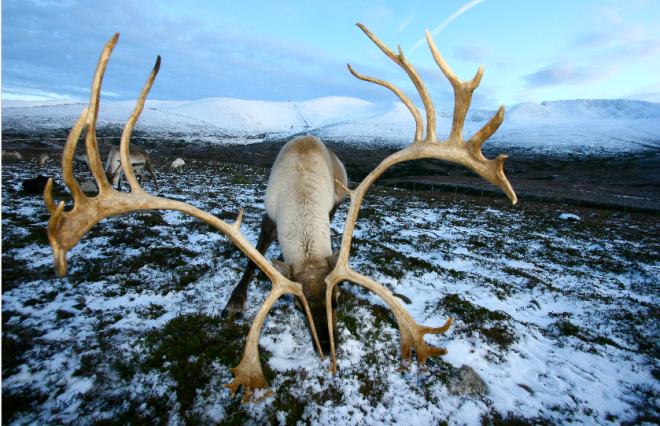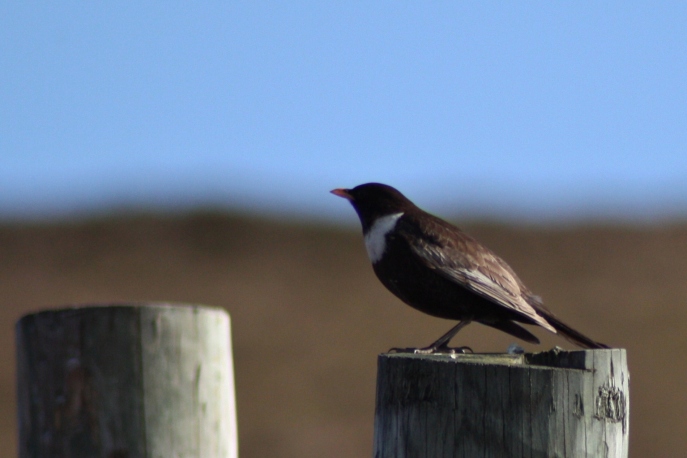Many people who come and visit the reindeer want to know the answer to this very question: What is the difference between antler and horn?
Antlers
First of all, just in case you are in any doubt, reindeer grow antlers, not horns! Many folk ask us what antlers are made of and ‘are they made of wood?’ is a surprisingly common question which always amuses us!
Antlers are an extension of the animals skull, found on members of the family Cervidae (i.e. deer). They are made of bone, are a single structure and are shed and regrown every year. Antlers grow from pedicles – bony supporting structures that develop on the skull. Sometimes, the pedicles get damaged and you get a lopsided set of antlers like one of our female reindeer, Hopscotch. Occasionally, they don’t develop on one side at all, for example Dixie who only ever grows one antler.

Generally they are only grown on males but, of course, reindeer are the exception to the rule. Male reindeer lose their antlers shortly after the rut, the breeding season, in autumn. Female reindeer hold on to their antlers over the winter because access to food is critical during winter pregnancy. Having antlers generally makes you more dominant so you can push the antler-less boys off the good food patches! However there are always exceptions… Arnish, who is no longer with us, was a ‘mega hard’ reindeer and never grew a single antler but she was as tough as old boots and just battered other reindeer with her front hooves when required!
Reindeer start to grow new antlers again in the spring and its incredibly fast growing, up to an inch in a week. On some of the big boys, like Crann, you have a few days off and return to see a massively noticeable difference in his antler size. While the antlers are growing, the bone is encased in super soft velvet, hair covered skin, which covers the nerves and the blood vessels feeding the antlers from the tip. Once the antlers are fully grown, end of August for reindeer, the blood supply cuts off and the velvet starts to dry and crack and come away from the bone. The reindeer help this process by rubbing their antlers against vegetation and what ever is about, like a fence post! They can look a bit gory at this stage as flaps of bloody velvet dangle off them like dread locks! Once its all peeled away they are left with solid bone antlers which the bulls now use during the rut to impress females and fight off other bulls.

They lose them, as already mentioned, shortly after the rut or after winter for females and then the whole process restarts the following spring…pretty clever!
Horns

Found on sheep, bison, cows, pronghorn and antelopes, horns are made of two parts. They have an interior of bone (also an extension of the skull) covered by an outer keratinized sheath made of a very similar material to your fingernails.

One pair of horns is typical but some species of sheep have two or more pairs, for example Jacobs sheep. Horns are usually spiral or curved in shape and often have ridges on them.

Horns start to grow soon after birth and grow continually through the life of the animal and are never shed, with the exception of the Pronghorn which sheds and regrows its horny sheath every year, but retains its bony core. Unlike antlers, horns are never branched and although more commonly grown on males of the species, several females grow them too.
So hopefully that has shed (no pun intended!) some light on the subject. Come and visit the reindeer at different times of the year to see how the antlers change with the seasons. By the end of winter/start of spring, barely any will have antlers still attached and they do look a little strange compared to when they have the magnificent bony antlers of autumn. Just now the reindeer are all growing their new antlers so they are covered in lovely super soft velvet and are about half way to complete size.
Mel





